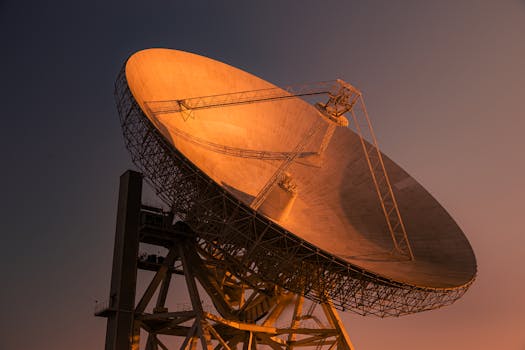Navigating Change: The Latest Trends in Satellite Telecommunications and Their Impact

Navigating Change: The Latest Trends in Satellite Telecommunications and Their Impact
Navigating Change: The Latest Trends in Satellite Telecommunications and Their Impact is a crucial aspect of the telecommunications industry, as it continues to evolve and expand its reach. The latest trends in satellite telecommunications are transforming the way we communicate, access information, and conduct business. In this article, we will delve into the latest trends in satellite telecommunications and their impact on the industry and society as a whole.
The satellite telecommunications industry has experienced significant growth in recent years, driven by advancements in technology, increasing demand for connectivity, and the need for reliable and efficient communication systems. One of the key trends in satellite telecommunications is the development of Low Earth Orbit (LEO) satellites, which offer faster and more affordable internet connectivity. LEO satellites are being launched by companies such as SpaceX, OneWeb, and Amazon’s Kuiper Systems, with the goal of providing global internet coverage and bridging the digital divide.
Another trend in satellite telecommunications is the use of High-Throughput Satellites (HTS), which offer higher bandwidth and faster data speeds. HTS are being used to support a range of applications, including broadband internet, video streaming, and mobile networks. The use of HTS is also enabling the development of new services, such as in-flight entertainment and maritime communication systems.
The impact of these trends is being felt across the satellite telecommunications industry, with companies adapting to the changing landscape and investing in new technologies and services. The use of LEO satellites and HTS is also having a significant impact on the environment, with the launch of thousands of new satellites raising concerns about space debris and the potential for collisions.
The Future of Satellite Telecommunications
As the satellite telecommunications industry continues to evolve, we can expect to see new trends and technologies emerge. One of the key areas of development is the use of artificial intelligence (AI) and machine learning (ML) in satellite systems. AI and ML are being used to improve the efficiency and performance of satellite systems, as well as to enable new services and applications.
Another area of development is the use of quantum communication in satellite systems. Quantum communication uses the principles of quantum mechanics to enable secure and reliable communication over long distances. The use of quantum communication in satellite systems has the potential to revolutionize the way we communicate, enabling secure and reliable communication for sensitive applications such as finance and government.
The satellite telecommunications industry is also being driven by the need for 5G and 6G connectivity. The use of satellite systems to support 5G and 6G networks is becoming increasingly important, as it enables the provision of high-speed and low-latency connectivity to remote and underserved areas.
Conclusion
In conclusion, the satellite telecommunications industry is undergoing significant changes, driven by the latest trends and technologies. The development of LEO satellites, HTS, and the use of AI and ML are transforming the industry and enabling new services and applications. As the industry continues to evolve, we can expect to see new trends and technologies emerge, driving further innovation and growth.




